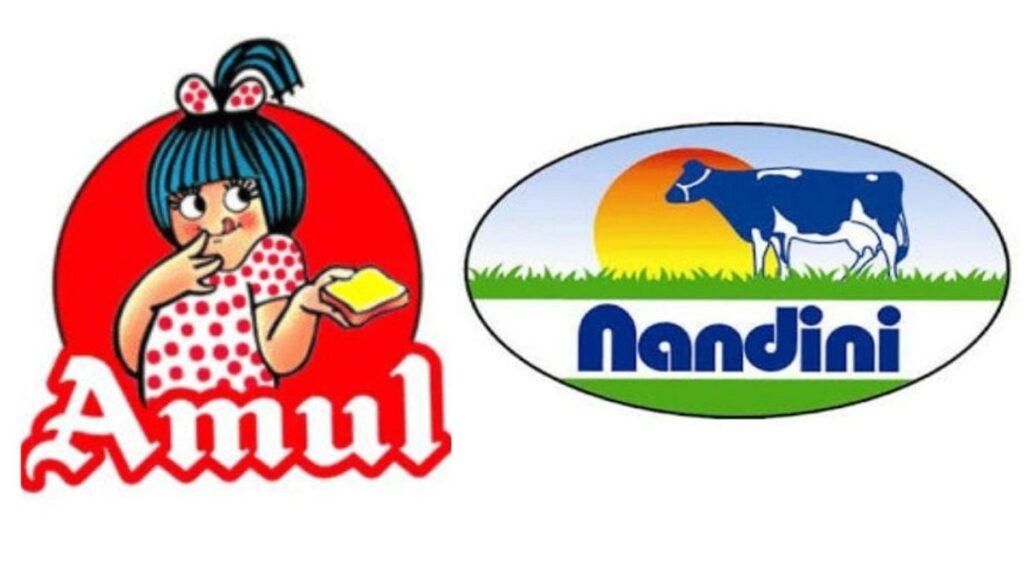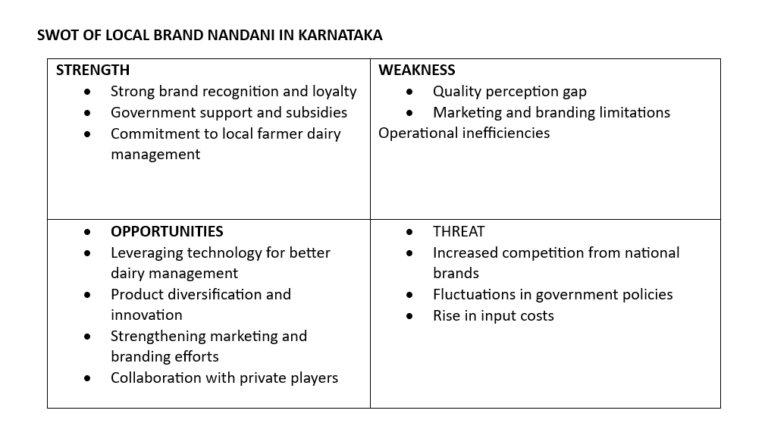The Battle of Dairy Giants: Amul vs Nandini in Karnataka



In the heart of Karnataka, a fierce battle was brewing, intertwining economics, culture, and politics. This story began on April 5 when Amul, the iconic Gujarat-based dairy cooperative, announced its strategic expansion into the Karnataka market with its brand of milk and curd. What was intended as a routine business move quickly spiraled into a major political controversy, threatening to reshape the upcoming assembly elections.
For decades, Nandini, the beloved local brand from the Karnataka Milk Federation (KMF), had been more than just a name—it was a symbol of Kannadiga pride and the backbone of the rural economy. Deeply entrenched in the lives of the people, Nandini’s products were found in almost every household, creating a strong brand loyalty. The announcement of Amul’s entry into this market sent shockwaves through the state, challenging Nandini’s market share and competitive pricing.
The backdrop to this drama was set months earlier when Union Home Minister Amit Shah, during the inauguration of a KMF mega dairy in Mandya, spoke about the wonders that cooperation between Amul and Nandini could bring to the dairy sector. Opposition parties, Congress and JD(S), seized upon this, claiming it was a prelude to merging Nandini with Amul—a move they argued would betray the trust of the people and erode the local brand’s identity and emotional connect.
The ruling BJP, however, was quick to dismiss these allegations. Chief Minister Basavaraj Bommai and other leaders emphatically stated that there were no plans to merge Nandini with Amul. They accused the opposition of politicizing a routine business expansion to create fear and confusion among the electorate, attempting to manipulate consumer perception and engagement.
Despite these assurances, the opposition did not relent. Randeep Surjewala, the AICC general secretary and Karnataka party in-charge, accused the BJP of trying to “sell off” Nandini. Former Chief Minister H D Kumaraswamy of JD(S) echoed this sentiment, alleging that Amul aimed to eliminate its competitor in Karnataka, thereby undermining Nandini’s market dominance and competitive advantage.
The controversy was further fueled by a directive from the Food Safety and Standards Authority of India (FSSAI) to include “Dahi” in Hindi on curd packets. This was perceived by many as an imposition of Hindi over local languages, striking a chord with the people and adding another layer of complexity to the unfolding drama.
Historically, Amul had been present in Karnataka, selling products like butter, ghee, yogurt, and ice cream. However, its foray into the milk and curd market—areas dominated by Nandini—was seen as a direct challenge. The opposition warned that this could lead to a scarcity of Nandini products, disrupting product availability and forcing consumers to switch to Amul.
The stakes were high. Nandini was not just a brand but a lifeline for many farmers in Karnataka. It was the second-largest cooperative institution after Amul, producing over 90 lakh liters of milk daily, and boasted a business worth Rs 21,000 crore. The fear of losing this to a larger entity like Amul stirred emotions and rallied support for the opposition’s cause.
Nandini’s competitive pricing—Rs 39 per liter for toned milk compared to Amul’s Rs 52—along with its reputation for product quality and zero adulteration, made it a market leader. Its extensive network of milk producers and unions added to its strength, further solidifying its place in the hearts of Kannadigas and enhancing its brand equity and market penetration.
As the elections approached, the BJP found itself walking a tightrope. The rural economy’s dependence on KMF and the deep emotional connection with Nandini meant that the party had to tread carefully. The opposition, sensing an opportunity, continued to hammer the narrative that the BJP was not to be trusted with local interests, leveraging Nandini’s strong brand identity and consumer base.Chief Minister Bommai and his party highlighted their contributions to the cooperative sector, pointing to initiatives that boosted milk production and expanded Nandini’s reach. They also underscored that milk production dips were seasonal, a common occurrence during summer, and not indicative of any systemic issues within the supply chain.
Despite these reassurances, the controversy refused to die down. The battle lines were drawn, and the narrative of “One Nation, One Amul” versus local pride became a significant poll issue. The outcome of this dairy war was poised to influence not just the immediate political landscape but also the future of Karnataka’s dairy sector, impacting both market dynamics and consumer behavior.
In the end, the story of Amul vs. Nandini was more than just a business conflict. It was a tale of cultural identity, economic survival, and political maneuvering. As the assembly elections loomed, the people of Karnataka watched closely, their choices shaped by the brand that had long been a part of their daily lives, influencing their customer preference and engagement.
